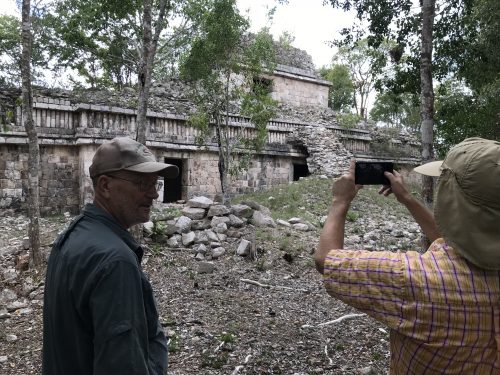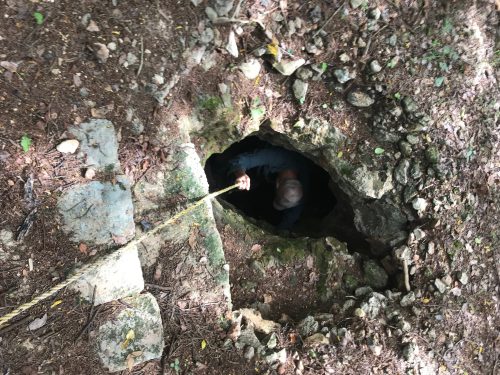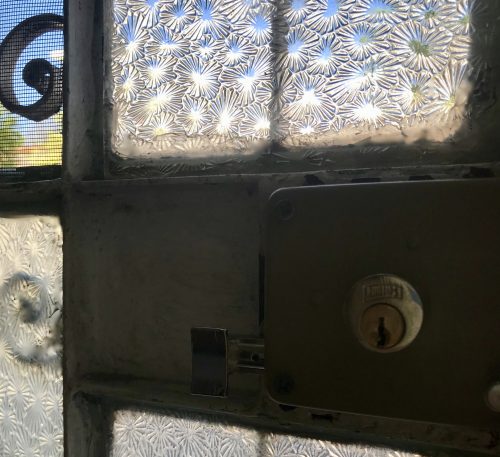Here is a peek at the headline of npr’s article, posted as fair use, considering journalistic practices: <being paste of audio intro to above article>
The text, from the Complete Jewish Bible: https://www.biblestudytools.com/cjb/1-kings/1.html —
1 King David grew old, the years took their toll, and he couldn’t get warm even when they covered him with bedclothes.
2 His servants said to him, “Let us try to find a young virgin for my lord the king. She can wait on the king and be a companion for him, and she can lie next to you, so that my lord the king will get some heat.”
3 After looking through all of Isra’el’s territory for a beautiful girl, they found Avishag the Shunamit and brought her to the king.
4 The girl was very beautiful and became a companion for the king. She took care of him, but the king did not have sexual relations with her.
5 Adoniyah the son of Haggit was beginning to claim that he would be king; to this end he organized chariots and horsemen, with fifty men to run ahead of him.
6 (His father had never in his life confronted him by asking, “Why are you behaving this way?” Moreover, he was a very handsome man; he was born next after Avshalom.)
7 He conferred with Yo’av the son of Tz’ruyah and Evyatar the cohen; and they both supported Adoniyah.
8 But Tzadok the cohen, B’nayah the son of Y’hoyada, Natan the prophet, Shim’i, Re’i and David’s elite guard were not on Adoniyah’s side.
9 One day Adoniyah killed sheep, oxen and fattened calves at the Stone of Zochelet, by ‘Ein-Rogel. He summoned all his brothers the king’s sons, and all the men of Y’hudah the king’s servants;
10 but he did not summon Natan the prophet, B’nayah, the elite guard or Shlomo his brother.
11 Natan went to Bat-Sheva the mother of Shlomo and said, “Haven’t you heard that Adoniyah the son of Haggit has become king without the knowledge of David our lord?
12 Now, come, please let me give you advice, so that you can save both your own life and that of your son Shlomo.
13 Go, get in to see King David, and say to him, ‘My lord, king, didn’t you swear to your servant, “Your son Shlomo will be king after me; he will sit on my throne”? So why is Adoniyah king?’
14 Right then, while you are still talking with the king, I will also come in after you and confirm what you are saying.”
15 Bat-Sheva went in to the king in his room. (The king was very old; Avishag the Shunamit was in attendance on the king.)
16 Bat-Sheva bowed, prostrating herself to the king. The king asked, “What do you want?”
17 She answered him, “My lord, you swore by ADONAI your God to your servant, ‘Your son Shlomo will be king after me; he will sit on my throne.’
18 But now, here is Adoniyah ruling as king; and you, my lord the king, don’t know anything about it.
19 He has killed oxen, fattened calves and sheep in great numbers; and he has summoned all the sons of the king, Evyatar the cohen and Yo’av the commander of the army; but he didn’t summon Shlomo your servant.
20 As for you, my lord the king, all Isra’el is watching you; they are waiting for you to tell them who is to sit on the throne of my lord the king after him.
21 If you don’t, then, when my lord the king sleeps with his ancestors, I and my son Shlomo will be considered criminals.”
22 Right then, while she was still talking with the king, Natan the prophet entered.
23They told the king, “Natan the prophet is here.” After coming into the king’s presence, he prostrated himself before the king with his face to the ground.
24 Natan said, “My lord king, did you say, ‘Adoniyah is to be king after me; he will sit on my throne’?
25 For he has gone down today and killed oxen, fattened calves and sheep in great numbers; and he has summoned all the king’s sons, the commanders of the army and Evyatar the cohen; right now they are eating and drinking in his presence and proclaiming, ‘Long live King Adoniyah!’
26 But he didn’t summon me your servant, or Tzadok the cohen, or B’nayah the son of Y’hoyada or your servant Shlomo.
27Is this authorized by my lord the king without your having told your servant who would sit on the throne of my lord the king after him?”
28 King David answered by saying, “Summon Bat-Sheva to me.” She entered the king’s presence and stood before the king.
29 Then the king swore an oath: “As ADONAI lives, who has delivered me from all adversity,
30 as I swore to you by ADONAI the God of Isra’el, ‘Your son Shlomo will be king after me; he will sit on my throne in my place,’ so will I do today.”
31Bat-Sheva bowed with her face to the ground, prostrating herself to the king, and said, “Let my lord King David live forever.”






















